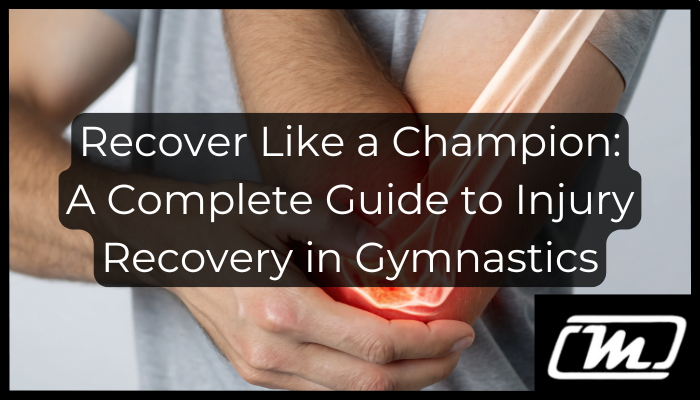Injuries are an unfortunate reality in gymnastics. Whether it’s an ankle sprain during a beam dismount or a strained shoulder from repetitive bar routines, the road to recovery can be complex. But with the right guidance, injury doesn’t have to be a setback—it can be a launchpad for smarter, stronger athletes.
Here’s your go-to guide for managing injury recovery inside your gymnastics facility—with practical strategies you can implement immediately.
Step 1: Get the Right Diagnosis, Fast
Time is critical. The longer you delay, the longer the recovery. Always refer athletes to a sports-specific medical provider, ideally one who understands gymnastics mechanics. A general practitioner might miss overuse injuries common in gymnasts, like:
- Spondylolysis (lower back stress fracture)
- Sever’s disease (heel pain in growing athletes)
- Wrist impingement syndrome from vault/bar training
Step 2: Implement “Smart Rest” – Not Total Shutdown
Complete inactivity can cause deconditioning and delay mental recovery. Instead, practice active rest – reducing stress on the injured area while keeping the rest of the body and mind engaged.
- Substitute lower limb work with core strength, handstand holds (if safe), or shoulder stability drills
- Set up a “Recovery Corner” with Therabands, foam rollers, and stretch routines
Step 3: Use Periodized Return-to-Skill Protocols
One of the biggest mistakes? Rushing back too fast.
Use a 4-phase recovery progression:
Phase 1: Isolated Recovery
- Physical therapy
- Range-of-motion and light mobility
- Use visualization or mental imagery to maintain muscle memory
Phase 2: Light Conditioning
- Resume cardio and strength with bodyweight
- Use padded landing surfaces and avoid hard impact
- Begin proprioception work (balance, single-leg drills)
Phase 3: Modified Skill Return
- Reintroduce basic skills on soft surfaces
- Reduce reps and increase rest between drills
Phase 4: Full Integration
- Resume full training under coach supervision
- Track fatigue and soreness daily
- Reinforce warm-up and cooldown routines
Step 4: Don’t Overlook Mental Recovery
Injury often leads to:
- Fear of re-injury
- Loss of identity (especially in competitive athletes)
- Reduced motivation
- Encourage journaling recovery wins
- Provide weekly check-ins
- Consider sports psychology referrals if fear persists
Step 5: Equip Your Gym for Safer Skill Reintroduction
These training aids aren’t medical rehab tools, but they’re crucial for easing athletes back into high-impact skills after time off, minor injuries, or mental blocks:
| Product | How It Supports Safe Return |
|---|---|
| Skill Cushions | Absorb landings to ease gymnasts back into high-impact skills |
| Incline Mats | Break down tumbling or dismounts into manageable steps |
| Resi-Pits | Provide safer landings during aerials, vaults, or bar work |
| Low Beams & Floor Beams | Let athletes regain balance confidence before moving to height |
Final Thought: Culture Matters
Create a gym environment where:
- Athletes don’t feel punished for being injured
- Coaches reward smart recovery decisions
- Progress is measured in effort, not just performance
Injury recovery is part of the sport. When handled the right way, it can create more resilient, more aware, and more capable athletes… on and off the mat.
Prevention is the Best Recovery
While it’s crucial to support gymnasts after an injury, the ultimate goal is to prevent them in the first place. That starts with training smart—and investing in the right protective equipment from the beginning.
At Mancino, we design every mat, block, and barrier with athlete safety in mind. From custom-cut wall padding to precision-placed skill cushions our gear isn’t just about performance, it’s about protection.
Because when your gym is outfitted with equipment engineered for impact absorption, stability, and confidence, you reduce risk at every level.


